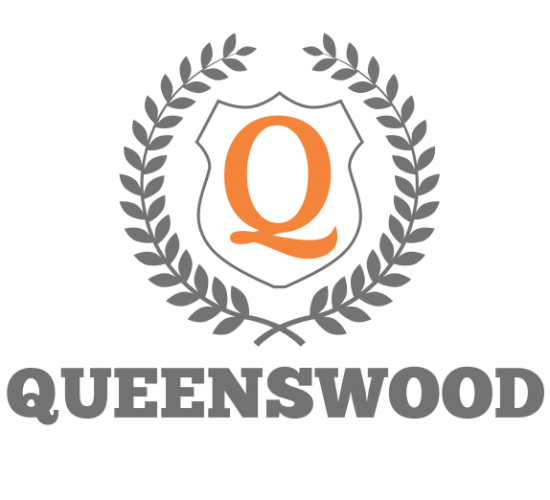
English as a Second Language Level 3 – ESLCO course further extends students’ skills in listening, speaking, reading, and writing in English for a variety of everyday and academic purposes. Students will make short classroom oral presentations; read a variety of adapted and original texts in English; and write using a variety of text forms. As well, students will expand their academic vocabulary and their study skills to facilitate their transition to the mainstream school program. This course also introduces students to the rights and responsibilities inherent in Canadian citizenship, and to a variety of current Canadian issues.

One language sets you in a corridor for life. Two languages or a Second language opens every door along the way.
| Unit | Titles and Descriptions | Time and Sequence |
|---|---|---|
| 1 | A Whirlwind of Emotions Reading Extract and demonstrate meaning from short stories, poetry, and independent novel study Writing Linked paragraphs, news report, summaries, personal response journals; Grammar usage, spelling and punctuation Listening and Speaking Presentation of a media text and book talk using language structures correctly Socio-cultural Work effectively in group learning activities; Prepare an advertisement for a product to sell to a character in a story Summative Evaluation Short story test and oral presentation of media text. |
20 Hours |
| 2 | Short Stories/Folk Tales Reading Selection of short mystery stories Information texts, newspapers and research information on mysteries of the world. Writing Informational paragraphs, note-taking and summaries using correct conventions of the English Language Listening and Speaking Demonstrate their ability to apply the correct stylistic functions. Socio-cultural Competence and Media Literacy Explore literacy and stylistic devices and their functions Summative Assessment Produce a writing piece that expresses their feelings as a newcomer to Canada. |
20 Hours |
| Mid-Term Assignment | ||
| 3 | An Author in the Making Reading Analysis and comprehension and vocabulary study. Socio-cultural Competence and Media Literacy Identify and connect pieces with similar themes Writing Develop the structure of a short story Listening and Speaking Demonstrate their ability to apply the elements of a short story and connecting to themes Summative Assessment Produce a digital short story that expresses their ability to apply short story elements. |
30 Hours |
| 4 | The Canadian Gossip Reading Skimming and scanning information texts and newspaper articles. Socio-cultural Competence and Media Literacy Explain relationships between some important aspects of geography and history and current Canadian issues. Writing Note-taking, completing graphic organizers, and answering comprehension questions including grammar, etc. Listening and Speaking Dialogues and role plays using language structures correctly. Summative Assessment Scrapbook and media text presentation. |
20 Hours |
| 5 | Adapting to a New Situation Reading Exploration of daily obstacles faced as a newcomer; Extract and demonstrate meaning from texts Socio-cultural Competence and Media Literacy Participate effectively in a variety of learning and teaching situation; Prepare a media text for invention research. Writing Linked paragraphs, comprehension questions, information paragraphs, summaries, note-taking, character analysis, grammar usage. Listening and Speaking Dramatizations of sections of the novels, video analysis, oral presentation using language structures correctly. Summative Assessment Research project, oral presentation, linked paragraphs. |
18 Hours |
| Final ExamThis is a proctored exam worth 30% of your final grade. | 2 Hours | |
| Total | 110 Hours |
All course material is online, no textbook purchase required. Resources and reference for course materials will be provided on course webpage. Students are expected to watch and read all lecture videos and reading materials provided and complete relevant exercises at student’s time of continence.
Reference Texts
This course is entirely online and does not require or rely on any textbook.
As in a conventional classroom, instructors employ a range of strategies for teaching a course:
In addition, teachers and students have at their disposal several tools that are unique to electronic learning environments.
All course material is online, no textbook is required. Assignments are submitted electronically. Tests are completed online at a time convenient for the student, and the course ends with a final exam which the student writes under the supervision of a proctor approved by Queenswood High school at a predetermined time and place. The final mark and report card are then forwarded to the student’s home school.
Students must achieve the Ministry of Education learning expectations of a course and complete 110 hours of planned learning activities, both online and offline, in order to earn a course credit. Students must keep a learning log throughout their course which outlines the activities they have completed and their total learning hours. This log must be submitted before the final exam can be written.
The chart below indicates some general examples of online and offline activities.
| Online Learning Activities | Offline Learning Activities |
|---|---|
| Watching instructional videos | Reading materials for course |
| Watching additional resources videos | Studying instructional material |
| Completing online timed assignments | Practicing skills |
| Contributing to Forums | Completing assignments |
| Uploading video presentations | Completing essays |
| Communicating with instructor | Preparing presentations |
| Participating in live conferences | Reviewing for tests and exams |
| Practicing through online quizzes | Researching topics on internet |
| Reviewing peer submissions | |
| Assessing peer presentations | |
| Completing online timed exam |
Students are expected to access and participate actively in course work and course forums on a regular and frequent basis. This interaction with other students is a major component of this course and there are minimum requirements for student communication and contribution.
Queenswood High School’s approach to assessment and evaluation is based on the Ontario Ministry of Education’s Growing Success 2010 document. Assessment is the process of gathering information that accurately reflects how well a student is achieving the curriculum expectations in a subject or course. The primary purpose of assessment is to improve student learning. Assessment for this purpose is seen as both “assessment for learning” and “assessment as learning”. As part of assessment for learning, teachers provide students with descriptive feedback and coaching for improvement. Teachers engage in assessment as learning by helping all students develop their capacity to be independent, autonomous learners who are able to set individual goals, monitor their own progress, determine next steps, and reflect on their thinking and learning. Queenswood High School teachers use evidence from a variety of sources in their assessment. These include formal and informal observations, discussions, conversations, questioning, assignments, projects, portfolios, self-assessments, self-reflections, essays, and tests.
Assessment occurs concurrently and seamlessly with instruction. Our courses contain multiple opportunities for students to obtain information about their progress and achievement, and to receive feedback that will help them improve their learning. Students can monitor their own success through the tracking of learning goals and success criteria throughout all courses.
Summative “assessment of learning” activities occur at or near the end of periods of learning. Evidence of student achievement for evaluation is also collected over time from different sources, such as discussions, conversations and observation of the development of the student’s learning. Using multiple sources of evidence increases the reliability and validity of this evaluation. The evaluations are expressed as a percentage based upon the levels of achievement.
Growing Success articulates the vision the Ministry has for the purpose and structure of assessment and evaluation techniques. There are seven fundamental principles that ensure best practices and procedures of assessment and evaluation by Queenswood High School teachers. Assessment and evaluations:
The Final Grade
The evaluation for this course is based on the student’s achievement of curriculum expectations and the demonstrated skills required for effective learning. The percentage grade represents the quality of the student’s overall achievement of the expectations for the course and reflects the corresponding level of achievement as described in the achievement chart for the discipline. A credit is granted and recorded for this course if the student’s grade is 50% or higher. The final grade for this course will be determined as follows:
The general balance of weighting of the categories of the achievement chart throughout the course is:
| Knowledge and Understanding | 25% |
| Thinking | 25% |
| Communication | 25% |
| Application | 25% |
The Report Card
Two official report cards are issued – midterm and final. Each report card will focus on two distinct but related aspects of student achievement. First, the achievement of curriculum expectations is reported as a percentage grade. Additionally, the course median is reported as a percentage. The teacher will also provide written comments concerning the student’s strengths, areas for improvement and next steps. Second, the learning skills are reported as a letter grade, representing one of four levels of accomplishment. The report cards contain separate sections for the reporting of these two aspects. The report card also indicates whether an OSSD credit has been earned.
Teachers should explore aspects of intercultural communication – for example, how different cultures interpret the use of eye contact and body language in conversation and during presentations. Teachers should be aware of global events that may affect students and that can also be used as opportunities for instruction.
Note: A student whose achievement is below 50% at the end of a course will not obtain a credit for the course.
The purpose of the achievement chart is to:
The achievement chart provides a reference point for all assessment practice and a framework within which achievement will be assessed and evaluated.
Get More Information About 2022 Summer School Programmes
